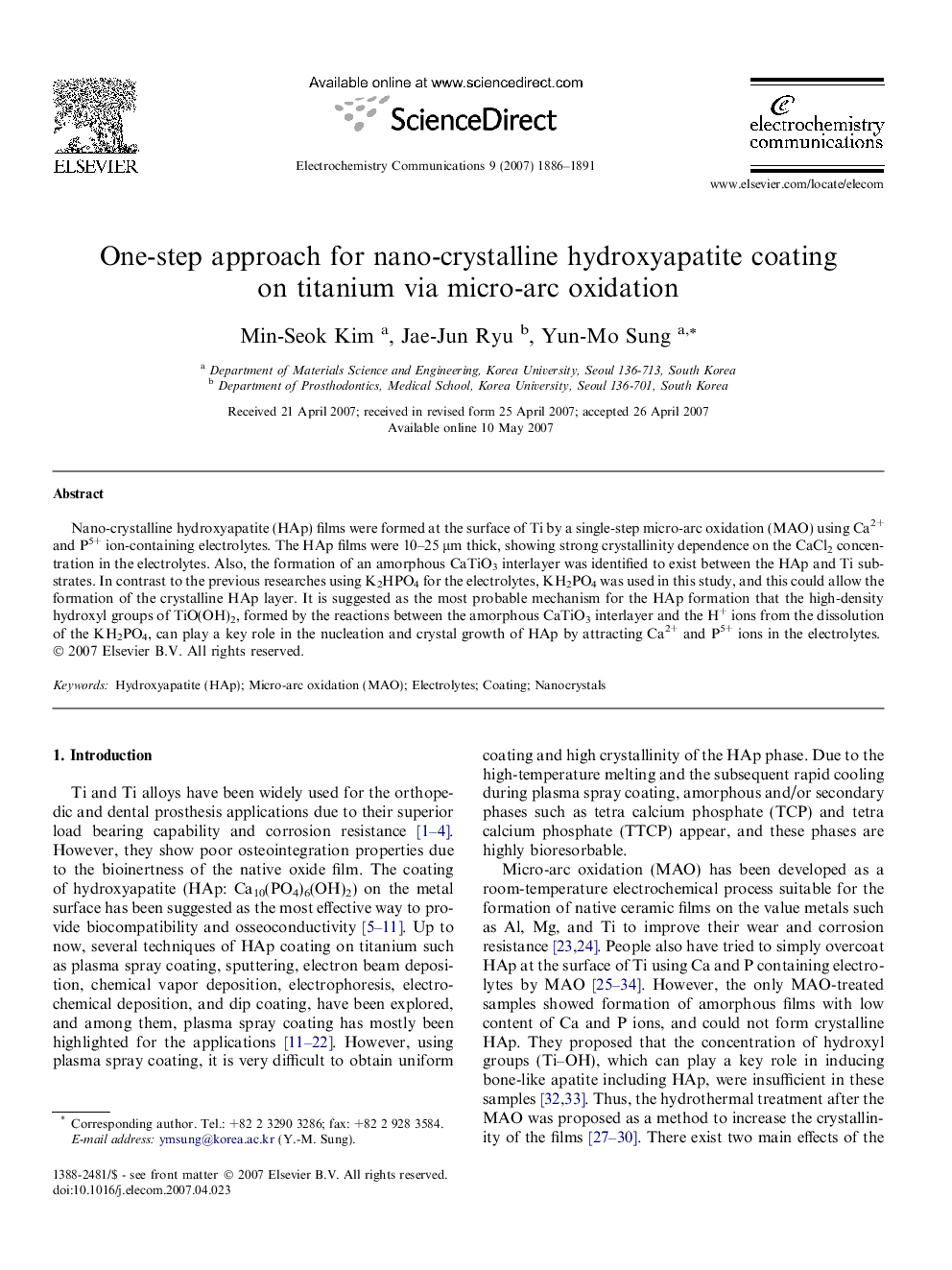| Article ID | Journal | Published Year | Pages | File Type |
|---|---|---|---|---|
| 181741 | Electrochemistry Communications | 2007 | 6 Pages |
Nano-crystalline hydroxyapatite (HAp) films were formed at the surface of Ti by a single-step micro-arc oxidation (MAO) using Ca2+ and P5+ ion-containing electrolytes. The HAp films were 10–25 μm thick, showing strong crystallinity dependence on the CaCl2 concentration in the electrolytes. Also, the formation of an amorphous CaTiO3 interlayer was identified to exist between the HAp and Ti substrates. In contrast to the previous researches using K2HPO4 for the electrolytes, KH2PO4 was used in this study, and this could allow the formation of the crystalline HAp layer. It is suggested as the most probable mechanism for the HAp formation that the high-density hydroxyl groups of TiO(OH)2, formed by the reactions between the amorphous CaTiO3 interlayer and the H+ ions from the dissolution of the KH2PO4, can play a key role in the nucleation and crystal growth of HAp by attracting Ca2+ and P5+ ions in the electrolytes.
